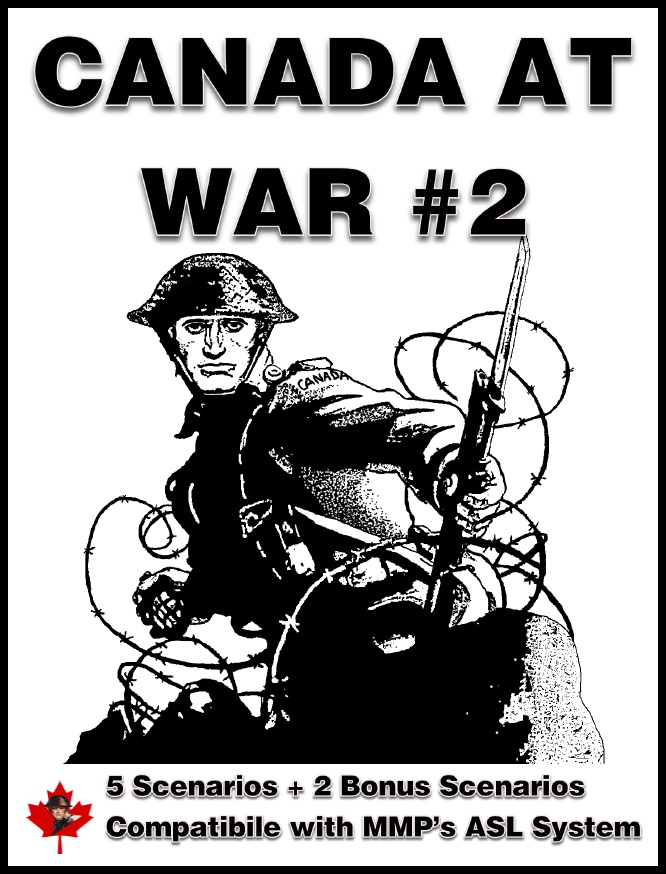

This five scenario pack is compatible with MMP's ASL System.
CaW 7 TO THE SEINE: At Vimoutiers on the Trun-Orbec road, the Canadian Black Watch came under fire from a German rearguard which could only be cleared with the assistance of the Le Regiment de Maisonneuvre. Passing through them B-Company of the Calgary Highlanders encountered a party of Germans in the process of demolishing a bridge.
CaW 8 FIRE AND BRIMSTONE: Given the code name Veritable, the offensive was launched on February 8. Mud and flooded ground hampered the advance and at times troops floundered through water three feet deep. The Scout Platoon of A Company, with the attached the Flame Platoon, Lake Superior Scottish Regiment were order to go around the southern end of the woods and rejoin the remainder of the company south of Winnenthal. On the way there they were fired upon by small arms from building along a near by road.
CaW 9 STIFF RESISTANCE: While the Canadian centre and right flanks were making rapid progress north of Twente Canal, the Canadian 3rd Division, on the left sector, was preparing to capture Zutphen and Deventer. The German 361.Infanterie Division reinforced with a parachute training battalion of the 6. Fallschirmjager Division defended the eastern approaches of Zutphen. The 9th Canadian Brigade encounter stiff resistance on the approach to the town and was slowly ground to a halt by the stubborn defenders, many of them "teen-aged" youngsters.
CaW 10 SHOOTING LIKE MAD: The 8th Canadian Infantry Brigade was given the task of opening up the approaches to the Calcar-Udem escarpment. At 0830 hours, 26 February, the Regiment de la Chaudiere surge into battle. Fifteen minutes later, the third battalion of the 8th Canadian Infantry Brigade, the North Shore Regiment moved out. Keppeln, the North Shore objective, was just another farming hamlet on the Calcar-Udem road.
CaW 11 OPERATION WELLHIT: On a series of hills running south-east from Fort de la Creche through St. Martin to Mont Lambert, then south to Herquelingue, and from there south-west to St. Etienne and Nocquet were the main German defences. Minefields and wire protected well-armed entrenchments and concrete pillboxes from which machineguns could lay down interlocking belts of fire.
Map Boards Required: 16, 17, 22, 33, 40, 41, & 44